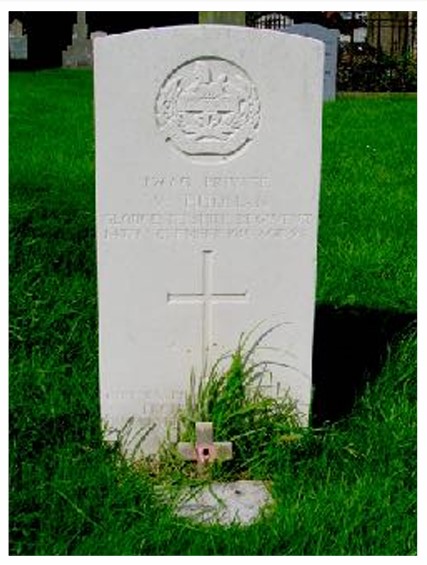9th Battalion, Gloucestershire Regiment

William Henry Hudman was the son of John Hudman (a garden labourer) and his wife Jane (née Jeynes). Born at Stensham in the early part of 1891, he was one of six children with one brother Frederick John (born 1893) and four sisters, Beatrice Annie (1893), Lucy May (1897), Freda Elizabeth (1904) and Maud Daisy (1909).
Upon leaving school William became a farm labourer and at the age of 24 he attested for military service on 11 January 1915 at Tewkesbury. He declared no previous military service and gave his address as Hill End, Twyning.
His initial posting was to the 11th Battalion of the Gloucestershire Regiment but this was quickly followed by a move to the 8th Battalion, who undertook training on Salisbury Plain, at Tidworth during the spring and summer of 1915. A posting to France followed on 4 August 1915.
The 8th Glosters formed part of 57 Brigade, 19th (Western) Division and an early deployment was to Marais, near Givenchy, south of the Bethune to Festubert Road, where the Division was placed in the Army Reserve, for a diversionary action designed to divert German forces from the Battle of Loos, which had opened on 25 September. Following this battle, the battalion remained in the Givenchy area, until well into 1916.
By 1 July 1916 the battalion had transferred to the Somme and was to play a part in the Somme Offensive, which began on 1 July 1916, under the command of the legendary Lieutenant Colonel Carton de Wiart VC, who possessed only one eye and one arm. The 8th Glosters moved forward in stages on 1 July 1916, until by 10pm they were in the rear of trenches situated on the ridge, known as the Tara-Usna Line, overlooking the village of La Boiselle. The next day was spent in trenches on that line, prior to an attack on the village, scheduled for 3 July. William Hudman suffered injuries on 2 July and after treatment at a Field Ambulance he was sent to a Casualty Clearing Station at Heilly and then to a General Hospital at Etaples. On 18 July 1916 he was re-patriated to England. His name appeared, as one of the wounded, in a Casualty List published in the Gloucestershire Journal of 11 August 1916.
A medical board on 17 January 1917 noted that Private Hudman had suffered gunshot wounds to the face and legs in action at the Somme on 2 July 1916. The report stated: Whilst carrying bombs in the front trenches. Struck by an explosion of one of the bombs he was carrying. Left eye has been removed. There is a cataract in right eye. Can see 6/24 with glasses. Permanent. Total incapacity.
He was discharged as no longer physically fit for military service on 7 February 1917, having received an artificial eye and he received a Silver War Badge in recognition of his discharge due to wounds. His conduct in the Army was described as ‘very good’.
It would appear that he went to live at the St Dunstan’s Hostel, Regent’s Park, London; a home for soldiers whose had suffered blindness or sight related issues during the war. He died there on 14 November 1918. The cause of death is not known but it is very possible that it was due to the influenza epidemic of that time. He was aged 27 and single.
William Rudman was laid to rest in the churchyard of St Mary Magdalene Church, Twyning, his home village on 20 November 1918. A standard CWGC headstone now marks his grave and he is commemorated on the Twyning War Memorial.
GRA
28 March 2018
